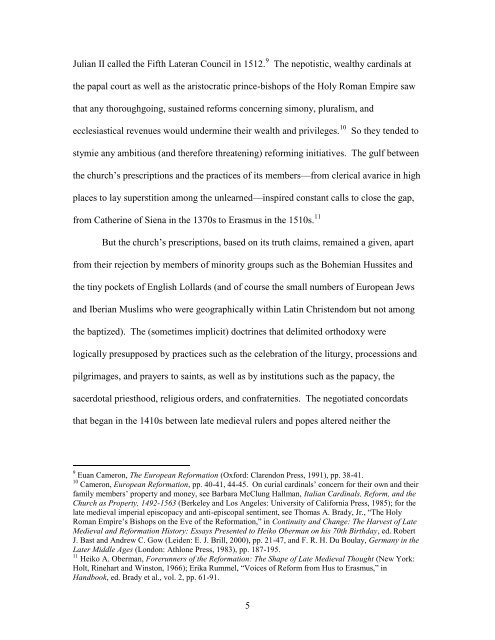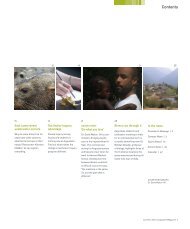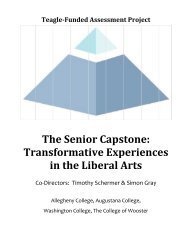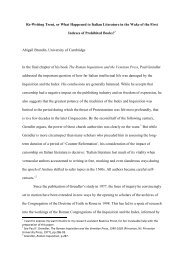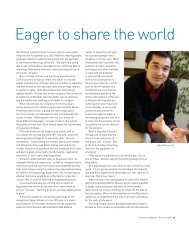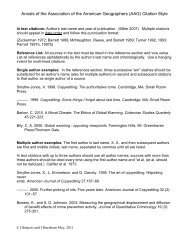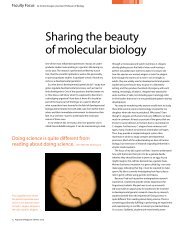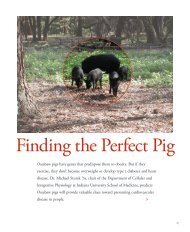Brad S. Gregory - Augustana College
Brad S. Gregory - Augustana College
Brad S. Gregory - Augustana College
You also want an ePaper? Increase the reach of your titles
YUMPU automatically turns print PDFs into web optimized ePapers that Google loves.
Julian II called the Fifth Lateran Council in 1512. 9 The nepotistic, wealthy cardinals at<br />
the papal court as well as the aristocratic prince-bishops of the Holy Roman Empire saw<br />
that any thoroughgoing, sustained reforms concerning simony, pluralism, and<br />
ecclesiastical revenues would undermine their wealth and privileges. 10 So they tended to<br />
stymie any ambitious (and therefore threatening) reforming initiatives. The gulf between<br />
the church‟s prescriptions and the practices of its members—from clerical avarice in high<br />
places to lay superstition among the unlearned—inspired constant calls to close the gap,<br />
from Catherine of Siena in the 1370s to Erasmus in the 1510s. 11<br />
But the church‟s prescriptions, based on its truth claims, remained a given, apart<br />
from their rejection by members of minority groups such as the Bohemian Hussites and<br />
the tiny pockets of English Lollards (and of course the small numbers of European Jews<br />
and Iberian Muslims who were geographically within Latin Christendom but not among<br />
the baptized). The (sometimes implicit) doctrines that delimited orthodoxy were<br />
logically presupposed by practices such as the celebration of the liturgy, processions and<br />
pilgrimages, and prayers to saints, as well as by institutions such as the papacy, the<br />
sacerdotal priesthood, religious orders, and confraternities. The negotiated concordats<br />
that began in the 1410s between late medieval rulers and popes altered neither the<br />
9 Euan Cameron, The European Reformation (Oxford: Clarendon Press, 1991), pp. 38-41.<br />
10 Cameron, European Reformation, pp. 40-41, 44-45. On curial cardinals‟ concern for their own and their<br />
family members‟ property and money, see Barbara McClung Hallman, Italian Cardinals, Reform, and the<br />
Church as Property, 1492-1563 (Berkeley and Los Angeles: University of California Press, 1985); for the<br />
late medieval imperial episcopacy and anti-episcopal sentiment, see Thomas A. <strong>Brad</strong>y, Jr., “The Holy<br />
Roman Empire‟s Bishops on the Eve of the Reformation,” in Continuity and Change: The Harvest of Late<br />
Medieval and Reformation History: Essays Presented to Heiko Oberman on his 70th Birthday, ed. Robert<br />
J. Bast and Andrew C. Gow (Leiden: E. J. Brill, 2000), pp. 21-47, and F. R. H. Du Boulay, Germany in the<br />
Later Middle Ages (London: Athlone Press, 1983), pp. 187-195.<br />
11 Heiko A. Oberman, Forerunners of the Reformation: The Shape of Late Medieval Thought (New York:<br />
Holt, Rinehart and Winston, 1966); Erika Rummel, “Voices of Reform from Hus to Erasmus,” in<br />
Handbook, ed. <strong>Brad</strong>y et al., vol. 2, pp. 61-91.<br />
5


